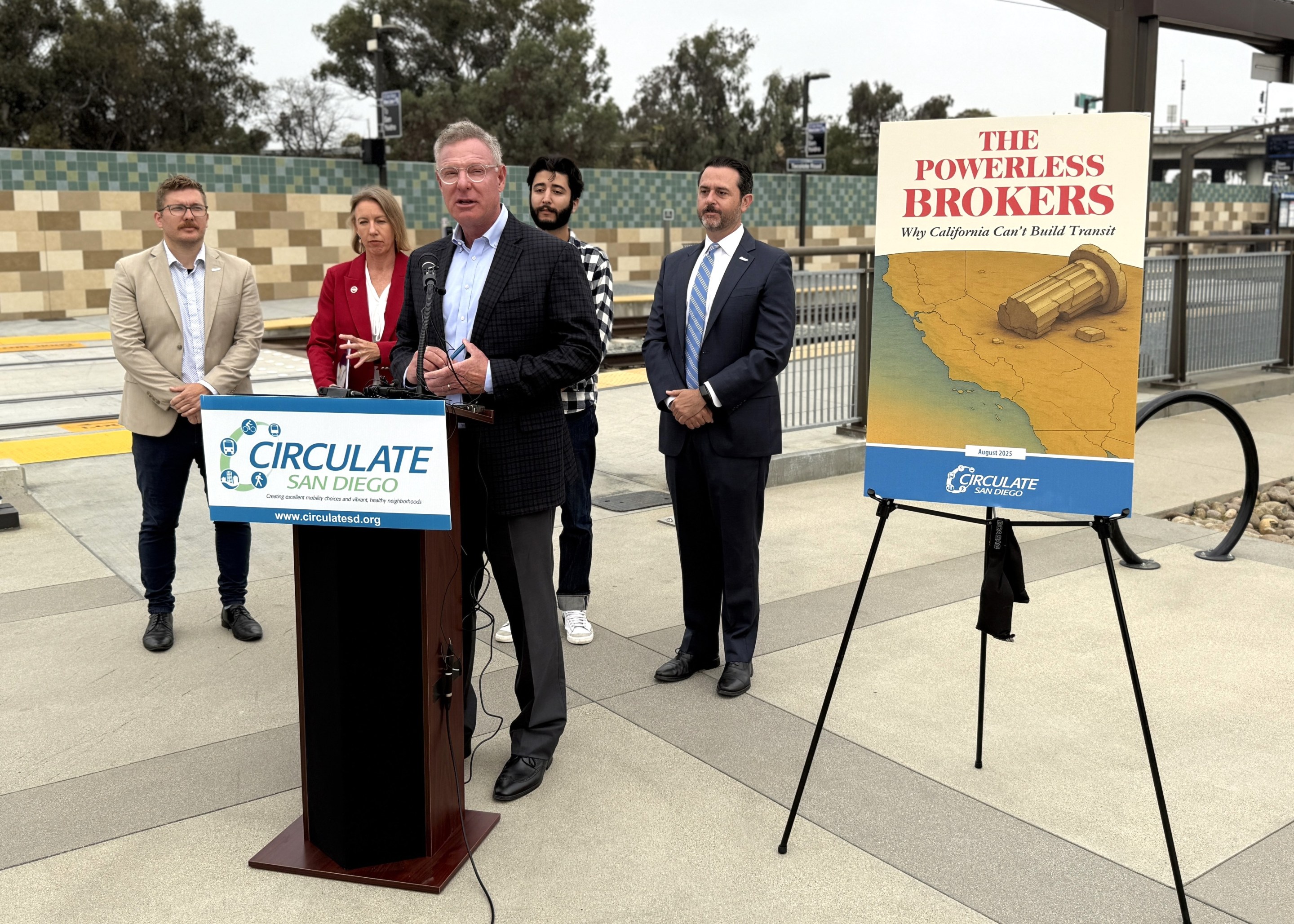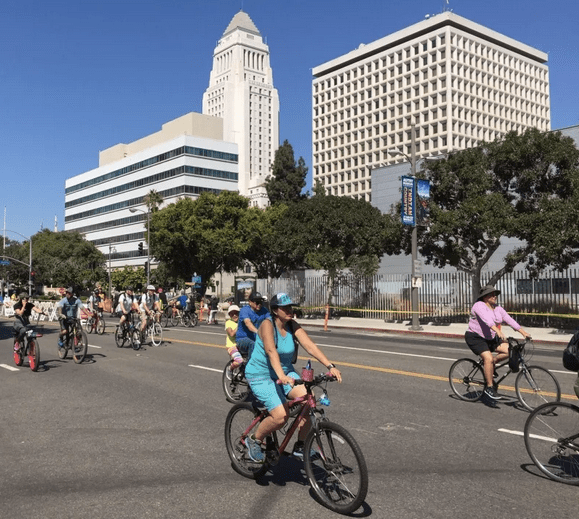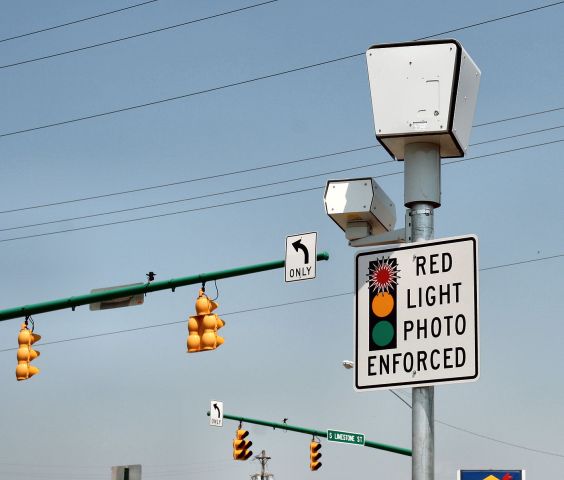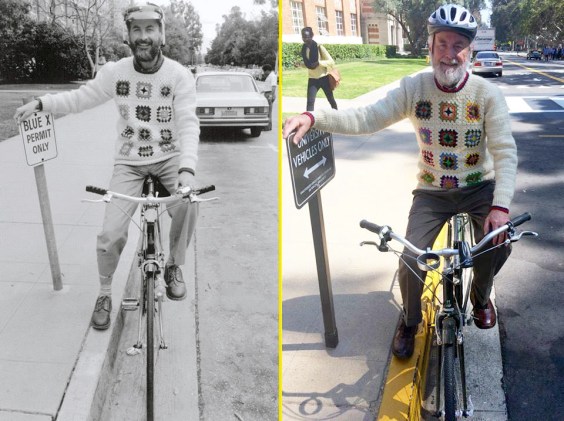It’s a tale as old as time, or at least as old as the State of California. A transit agency sees an opportunity for a groundbreaking project that will change transportation in its region. The agency gets politicians excited about the project and voters back a measure funding it. The project receives its federal and state environmental clearances and all that’s remaining before ground is broken is a handful of local permits.
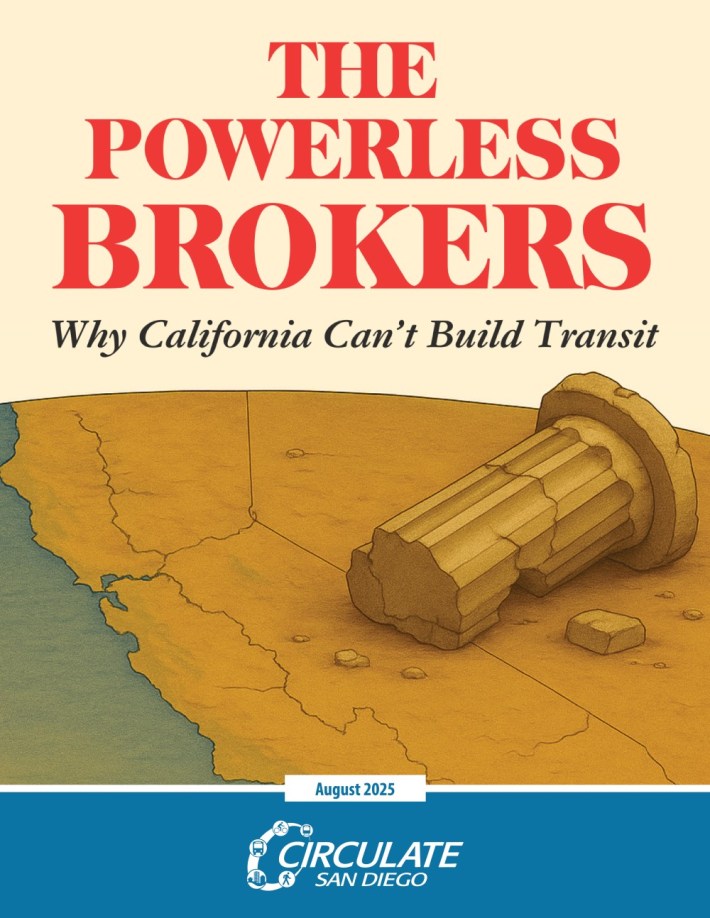
But then the project waits for those clearances. And waits. And waits.
Its new report, The Powerless Brokers: Why California Can't Build Transit, Circulate San Diego examines the statewide phenomenon and proposes some solutions.
Circulate CEO Colin Parent makes it clear in the press events announcing the report that the permits the report is critiquing are not ones concerning safety or compliance with state environmental laws. Instead, it’s more concerned with slow-walking, for whatever reason, permits having to deal with temporary road closures, utility work, or some other concern that should be quickly worked out.
The report’s name is a play on words of the title of The Power Broker, a Biography of Robert Moses, whose work as a bureaucrat in New York City in the middle of the last century saw the construction of much of the city’s infrastructure. While Moses is a controversial figure historically, it's undeniable that few, be they elected leaders or community activists, were able to stop him from building.
“It's such a contrast to the Robert Moses story, right,” jokes Parent. “You have Robert Moses, an unelected bureaucrat who is able to build without anyone able to stop him. And now we have unelected bureaucrats who are not allowed to build but are allowed to stop building, at least when it comes to transit.”
Sometimes when a project is slowed, it’s because a municipality sees a mega-project coming through its borders as a lottery ticket to pay for a (possibly completely unrelated) project on their wish list. The report details several times cities in the Central Valley used the permitting process to negotiate more funds from the California High-Speed Rail Authority in exchange for a needed permit. In all these cases, the delays caused by the negotiations caused the authority to lose time and money in change orders.
But other times, the obstacle is just bureaucracy. The report details issues that Los Angeles Metro had with permitting its Westside Subway extension (now under construction) over a decade ago. Longtime Streetsblog readers are probably familiar with Beverly Hills' repeated efforts to block the project.
While Powerless Brokers discusses the fiasco with Beverly Hills, it also recounts the problem the subway project had getting permits from the City of Los Angeles. Despite near-unanimous support from Los Angeles City politicians, including Mayor Antonio Villaraigosa who was dubbed “the Subway Mayor” for his support, the project was held up when it needed permits from the city’s utility departments.
Powerless Brokers sees a need for major reform in how the state allows local permitting to be done. But regardless of what route is taken, leadership is going to have to come from the top levels of state leadership. Local governments that support transit can and should take the initiative and adopt supportive policies for transit permitting, but it’s the state that will need to lead when it comes to the largest projects.
Powerless Brokers doesn’t list a preferred solution to the problem but gives several examples. The report also isn’t demanding massive change all at once, recognizing that legislative change can be as slow as local permitting. Here are some ways the report gives to improve permitting.
Keep Things As They Are, But Create Permitting Rules Agencies Can Enforce
This solution goes to the top of the list because there’s already a movement to create these types of reforms.
Earlier this year, Senator Scott Wiener (D-SF) introduced SB 445 with the specific goal of streamlining permitting for large transit projects. While the legislation is still moving in the Assembly and has passed the Senate, it has been amended to basically only apply to High-Speed Rail.
Basically, the legislation creates a timeline in which permitting agencies have to grant or clearly explain why they have to reject a permit or it is automatically granted.
In both the press events announcing the report and in an interview with Streetsblog, Parent referred to this as the “shot clock” reform referencing the timer used in basketball to stop a team from excessively stalling.
“When agencies apply for permits, the permitting agencies have to make a decision within 60 days,” explains Parent of the “shot clock” proposal. If permitting agencies don't approve or reject, then the permit is automatically approved. That would still allow those local governments and other third party permitting agencies to have the decision making authority, but at least they would have to make those decisions within a reasonable amount of time.”
The 60-day deadline was one of the reforms proposed in SB 445 for projects statewide that was removed in the committee process.
Allow permitting agencies to Negotiate Self-Permitting to Transit Agencies if Certain Conditions Are Met.
This is the most complicated of the proposed solutions, but it boils down to creating a system where agencies and permit granters and agencies would negotiate early in the project development process on design standards. If agreed upon standards are met, then the transit agency can self-permit for the project.
The advantage of this system is that it creates clearer timelines and budgets for funders and reduces friction in the long-term between agencies and permitters.
Master Permitting Authority
Instead of having mega-projects go through dozens of permitting agencies with different rules and agendas, a state or federal agency could be created that would be charged with granting all of the permits for a large project. While this idea is exciting for agencies, it is a political heavy lift. However, for a high-priority mega-project such as California High-Speed Rail, it could have saved years of delay and billions of dollars. In fact, this proposal received the support from the CHSRA Inspector General in its review of the project's setbacks.
Let Mega Projects Permit Themselves
Pending your point of view, this is either the strongest possible cure or political poison. As mentioned above, this might be applicable for the highest priority projects, and with the political cost comes savings in both time and money.
But in the short term, SB 445 is expected to receive a final vote in the Assembly later this month and given the national focus on California’s High Speed Rail project would likely be signed into law by Governor Newsom before the end of the year.
